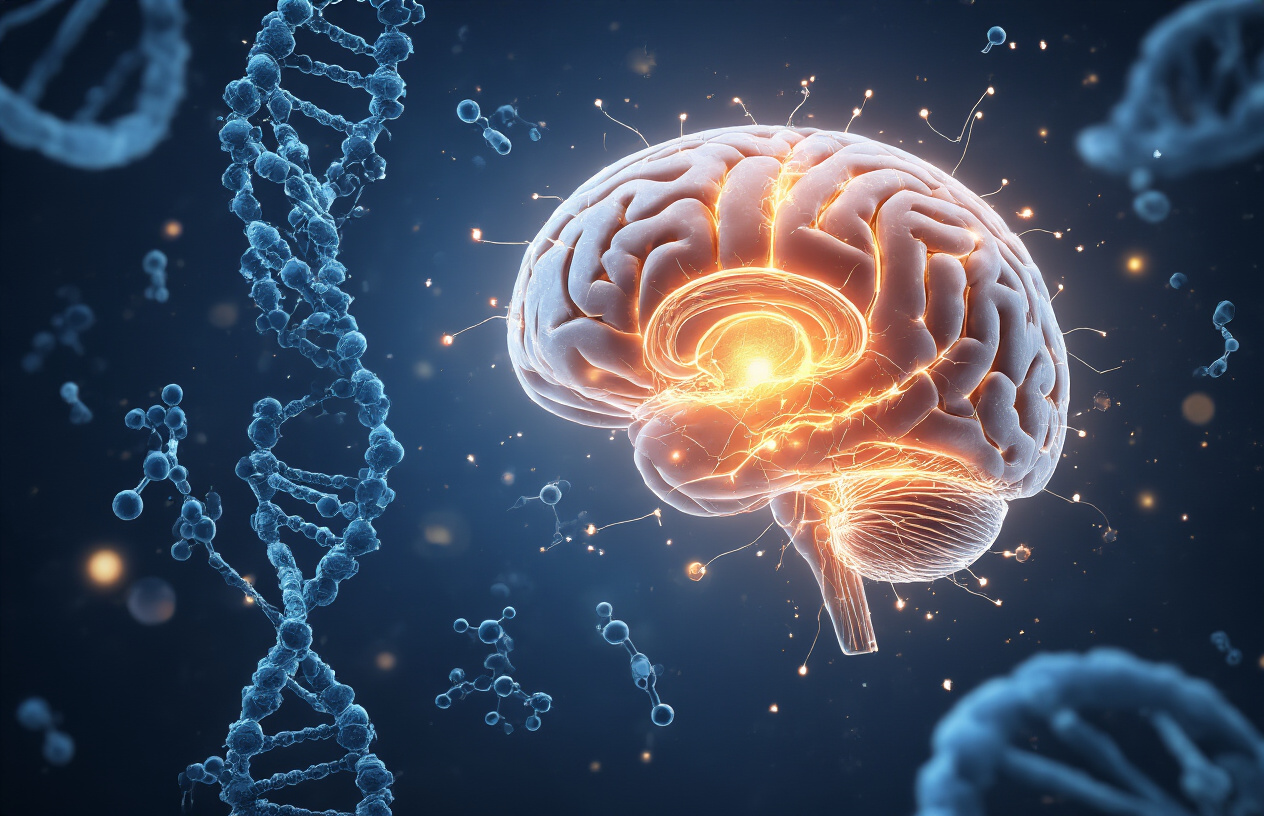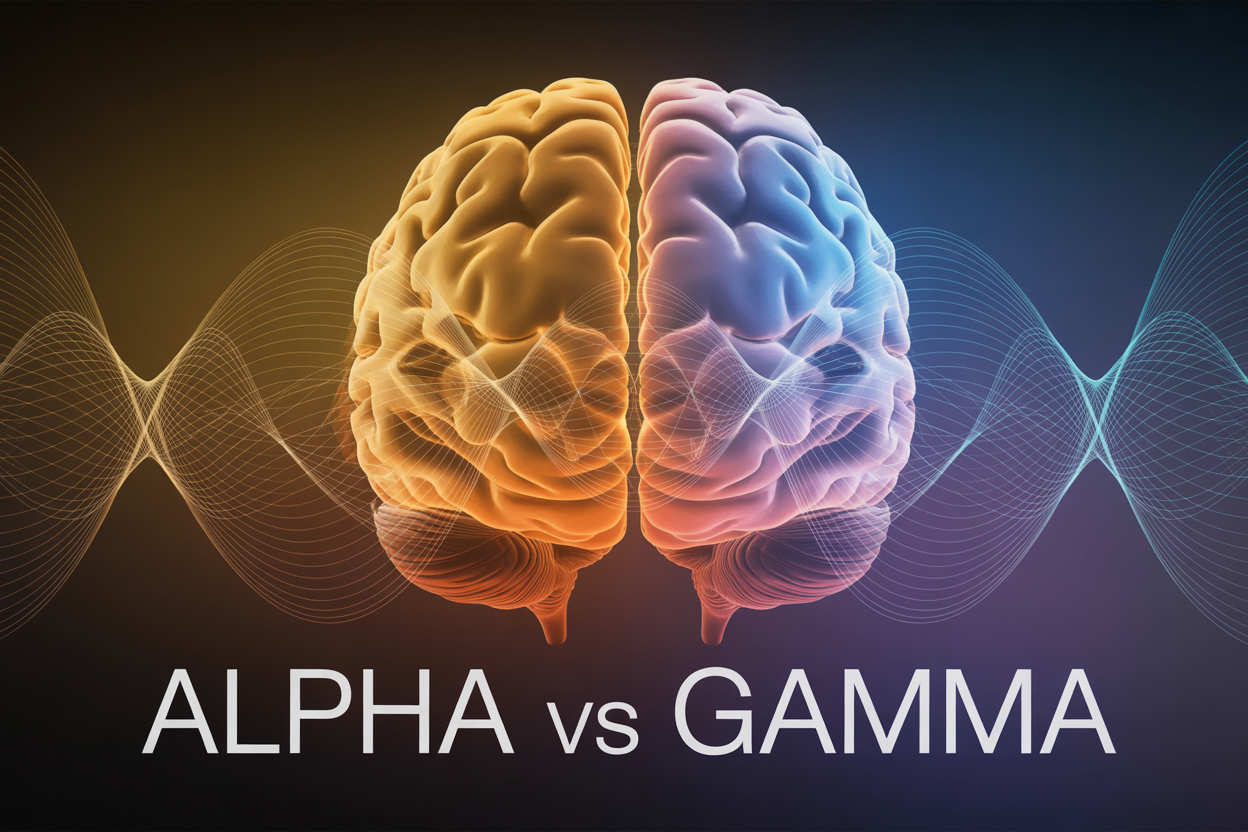Understanding human behavior psychology starts with recognizing that every action you take stems from a complex web of biological, cognitive, and social factors working together. This comprehensive guide breaks down the foundations of human behavior through proven psychological perspectives, giving you practical insights into why people act the way they do.
This resource is designed for psychology students, educators, mental health professionals, managers, and anyone curious about the science behind human actions. You’ll gain evidence-based knowledge that applies to personal relationships, workplace dynamics, and self-understanding.
We’ll explore the biological drivers of behavior that operate beneath your conscious awareness, from hormones and brain chemistry to evolutionary programming. You’ll discover how cognitive processes in decision making shape your daily choices, often in ways you don’t realize. Finally, we’ll examine how emotional intelligence and behavior work together as your internal compass, helping you navigate complex social situations and personal challenges.
Each section combines foundational psychology concepts with real-world applications, making behavioral psychology basics accessible and actionable for your daily life.
Core Biological Drivers That Shape Your Actions

Understanding Your Brain’s Command Center
Your brain operates like a sophisticated control room, with different regions working together to shape every action you take. The prefrontal cortex, your brain’s CEO, handles complex decision-making and impulse control. When you resist that extra slice of cake or choose to wake up early for exercise, you’re witnessing this region in action.
The limbic system, particularly the amygdala, processes emotions and triggers fight-or-flight responses. This ancient survival mechanism still influences modern behavior – explaining why you might feel anxious before a job interview or why certain situations trigger immediate emotional reactions.
Neurotransmitters like dopamine, serotonin, and norepinephrine act as chemical messengers, directly affecting your mood, motivation, and behavior patterns. Low serotonin levels can make you feel irritable and impulsive, while dopamine drives your reward-seeking behaviors and goal pursuit.
How Genetics Influence Your Personality Traits
Your DNA provides the blueprint for behavioral tendencies, though it’s not destiny. Research shows that genetics account for approximately 40-60% of personality traits like extraversion, conscientiousness, and neuroticism.
Twin studies reveal fascinating insights about inherited behavioral patterns:
- Temperament: Your natural energy level and emotional reactivity
- Risk tolerance: Some people are genetically wired to seek thrills
- Social preferences: Introverts and extraverts show different brain activation patterns
- Stress sensitivity: Genetic variations affect how you process and respond to stress
The DRD4 gene, for example, influences novelty-seeking behavior. People with certain variants tend to be more adventurous and open to new experiences. Similarly, variations in the COMT gene affect how quickly your brain breaks down dopamine, influencing your attention span and anxiety levels.
The Role of Hormones in Decision Making
Hormones act as powerful behavioral modulators, often operating below conscious awareness. Cortisol, your primary stress hormone, can hijack rational decision-making when levels remain elevated. High cortisol makes you more likely to choose immediate rewards over long-term benefits – explaining why stressed individuals often make impulsive financial decisions.
Testosterone influences both men and women, affecting confidence, risk-taking, and competitive behavior. Studies show that higher testosterone levels correlate with more aggressive negotiation tactics and willingness to take financial risks.
Oxytocin, the “bonding hormone,” shapes social behavior and trust levels. Released during physical contact, childbirth, and social bonding, it makes you more likely to cooperate and trust others. This biological driver of behavior explains why team-building activities often include physical elements.
Adrenaline creates the energy surge during exciting or threatening situations, sharpening focus but sometimes leading to tunnel vision in decision-making. Understanding these hormonal influences helps explain why your behavior might vary dramatically depending on your physiological state.
Neuroplasticity and Behavioral Change
Your brain’s ability to rewire itself throughout life offers hope for lasting behavioral change. Neuroplasticity means that repeated behaviors create stronger neural pathways, making certain actions more automatic over time.
The process works through several mechanisms:
Synaptic plasticity strengthens connections between neurons when you practice new behaviors consistently. Learning to play an instrument or developing a meditation habit literally reshapes your brain structure.
Structural plasticity involves growing new neurons and forming fresh neural networks. Regular exercise promotes neurogenesis in the hippocampus, improving memory and emotional regulation.
Functional plasticity allows different brain regions to take over functions when needed. Stroke patients often recover abilities as healthy brain areas compensate for damaged regions.
Breaking unwanted behavioral patterns requires patience because established neural pathways resist change. However, the same biological drivers of behavior that created negative habits can be harnessed to build positive ones. Consistent practice, combined with understanding of your brain’s reward systems, creates the foundation for lasting behavioral transformation.
The key lies in recognizing that behavioral change isn’t just willpower – it’s about working with your brain’s natural plasticity to create new, healthier patterns of thinking and acting.
Cognitive Processes Behind Your Daily Decisions

Mental Shortcuts That Guide Your Choices
Your brain processes millions of pieces of information every day, yet you make decisions quickly without getting overwhelmed. This happens because of heuristics – mental shortcuts that help you navigate complex situations with minimal effort. These cognitive processes in decision making work like your brain’s autopilot system.
Take the availability heuristic, for example. When deciding whether flying is safe, you probably think about recent plane crashes you’ve heard about in the news rather than looking up actual statistics. Your brain assumes that if something comes to mind easily, it must be more common or important. This shortcut saves time but can sometimes lead you astray.
The representativeness heuristic kicks in when you judge probability based on similarity. If someone matches your mental image of a librarian – quiet, bookish, organized – you’ll likely guess they work in a library even if statistically they’re more likely to work elsewhere.
Anchoring bias shows how the first piece of information you encounter heavily influences your decisions. When negotiating a salary, whoever throws out the first number sets an anchor that shapes the entire conversation. Your brain uses this initial reference point to judge whether subsequent offers are high or low.
These shortcuts aren’t flaws – they’re evolutionary advantages that helped our ancestors make quick survival decisions. Understanding them gives you better insight into your own behavioral patterns.
Memory Systems That Shape Your Responses
Your memory isn’t just a storage unit for past experiences – it actively shapes how you behave in the present. Different memory systems work together to influence your responses to daily situations in ways you might not even realize.
Procedural memory handles your automatic behaviors. Once you’ve learned to drive, your hands know exactly where to find the turn signal without conscious thought. This system stores muscle memory and habitual responses that keep your daily routines running smoothly. When you walk into your favorite coffee shop and automatically head to “your” usual table, procedural memory is guiding your steps.
Episodic memory stores your personal experiences and creates emotional associations that influence future choices. That time you got food poisoning from seafood might make you hesitant around fish restaurants for years. Your brain links past experiences with present situations, using emotional memories as warning signals or green lights for behavior.
Semantic memory contains your general knowledge about the world – facts, concepts, and learned rules about how things work. This system helps you navigate social situations by remembering cultural norms, like knowing to shake hands when meeting someone new in business settings.
Working memory acts as your mental workspace, holding information temporarily while you process it. When someone gives you directions, working memory keeps the street names active while you navigate. Its limited capacity means you can only juggle so much information at once, which affects how you prioritize and respond to competing demands.
Attention Mechanisms That Filter Your World
Your attention system works like a sophisticated filter, deciding what deserves your mental resources and what gets ignored. This filtering process dramatically shapes your behavior because you can only respond to what you notice.
Selective attention lets you focus on specific information while filtering out distractions. When you’re deep in conversation at a noisy party, your brain automatically dampens background chatter so you can hear your friend clearly. This cocktail party effect shows how your attention system prioritizes relevant information based on your current goals.
Your brain also uses attentional bias to favor certain types of information. If you’re worried about your health, you’ll notice every ache and pain more acutely. People with anxiety tend to spot potential threats faster than neutral stimuli. This isn’t paranoia – it’s your attention system adapting to what your brain thinks is important for your survival and well-being.
Change blindness reveals just how selective your attention really is. You might completely miss obvious changes in your environment if your attention is focused elsewhere. This explains why you can walk past the same building every day but never notice when they change the storefront sign.
Top-down attention kicks in when you consciously direct your focus, like when you’re looking for your keys. Bottom-up attention responds to sudden, unexpected stimuli – like a car horn that makes you jump. Both systems work together to help you navigate your environment effectively, but they also create blind spots that influence what you perceive and how you react.
Understanding these attention mechanisms helps explain why two people can experience the same situation completely differently based on where their attention was focused.
Emotional Intelligence as Your Behavioral Compass

Recognizing Your Emotional Triggers
Understanding what sets off your emotional reactions is like having an early warning system for your behavior. These triggers often stem from past experiences, deeply held beliefs, or unmet needs. When someone dismisses your ideas in a meeting, criticizes your work, or even uses a particular tone of voice, your emotional alarm bells start ringing.
The key lies in developing self-awareness through mindful observation. Start paying attention to physical sensations – that tightness in your chest when you feel overlooked, the heat rising in your face during conflict, or the knot in your stomach before difficult conversations. These bodily signals often appear before conscious awareness kicks in.
Common emotional triggers include feeling unheard, experiencing perceived unfairness, facing rejection, or encountering situations that challenge your core values. Some people react strongly to time pressure, while others become defensive when their competence gets questioned. Identifying your specific trigger patterns helps you prepare better responses rather than reacting impulsively.
Keep a simple emotion log for a week. Note what happened, how you felt, and what thoughts crossed your mind. Patterns will emerge, revealing your unique emotional landscape and the situations that consistently push your buttons.
Managing Emotional Responses Effectively
Once you spot your triggers, the next step involves developing emotional regulation skills. This doesn’t mean suppressing feelings or pretending they don’t exist – that approach typically backfires. Instead, effective emotional management means acknowledging feelings while choosing how to express them constructively.
The pause technique works remarkably well for most people. When you feel intense emotions building, take a deliberate breath and count to five before responding. This brief moment creates space between the trigger and your reaction, allowing your rational mind to engage alongside your emotional response.
Reframing also proves powerful. Instead of thinking “They’re attacking me,” try “They seem frustrated about something.” This shift doesn’t invalidate your feelings but opens up different response options. The situation remains the same, but your interpretation changes, which directly influences your emotional experience.
Physical strategies matter too. Regular exercise reduces stress hormones and increases mood-stabilizing chemicals. Deep breathing activates your parasympathetic nervous system, naturally calming your body’s fight-or-flight response. Even simple techniques like progressive muscle relaxation can reset your emotional state within minutes.
Practice emotional labeling by getting specific about what you’re experiencing. Rather than saying “I feel bad,” try “I feel disappointed and slightly anxious about the presentation tomorrow.” This precision helps your brain process emotions more effectively and reduces their intensity.
Reading Others’ Emotional Signals
Humans communicate emotions through multiple channels simultaneously – facial expressions, body language, vocal tone, and word choice all carry emotional information. Developing this skill enhances your relationships and helps you respond appropriately to others’ emotional states.
Facial expressions offer the most obvious clues. Micro-expressions flash across faces in fractions of seconds, often revealing true feelings before people consciously control their expressions. Watch for mismatches between words and expressions – someone saying “I’m fine” with a tight jaw and forced smile likely isn’t fine at all.
Body language speaks volumes about emotional states. Crossed arms might indicate defensiveness or discomfort, while open postures suggest receptiveness. Fidgeting, foot tapping, or repetitive movements often signal anxiety or impatience. People tend to lean toward things they like and away from things they don’t.
Voice provides rich emotional data through tone, pace, and volume changes. Stress typically raises vocal pitch, while sadness often lowers it. Speaking faster might indicate excitement or anxiety, while slower speech could suggest sadness or careful consideration.
Context matters enormously. The same behavior might mean different things in different situations. Silence during a brainstorming session could indicate thoughtful consideration, while silence after asking someone about their weekend might suggest discomfort or distraction.
Building Emotional Resilience
Emotional resilience represents your ability to bounce back from setbacks, adapt to change, and maintain psychological well-being during challenging times. Think of it as your emotional immune system – stronger resilience helps you weather life’s storms without getting completely knocked off course.
Building resilience starts with developing a growth mindset. Instead of viewing failures as proof of inadequacy, see them as learning opportunities. This shift transforms setbacks from threats to your identity into valuable feedback for improvement. People with high emotional intelligence and behavior awareness understand that struggle often precedes growth.
Strong social connections form another pillar of resilience. Humans are wired for connection, and supportive relationships provide emotional buffers during difficult times. Cultivate relationships where you can be authentic about your struggles without fear of judgment. Sometimes just talking through challenges with someone who listens can dramatically shift your perspective.
Self-compassion plays a surprising role in resilience. Treating yourself with the same kindness you’d show a good friend during tough times actually strengthens your ability to cope. Self-criticism might feel motivating, but research shows it typically increases stress and reduces performance over time.
Regular self-care practices build resilience reserves before you need them. This includes adequate sleep, nutrition, exercise, and activities that bring you joy. Think of these as deposits in your emotional bank account that you can draw upon during stressful periods.
Using Emotions for Better Decision Making
Emotions aren’t obstacles to good decision-making – they’re valuable sources of information when interpreted correctly. Your feelings often pick up on subtle cues that your conscious mind misses, providing important data for choices both big and small.
Gut feelings deserve attention, especially in social situations. That uncomfortable feeling about a business partner might reflect your unconscious processing of inconsistencies in their behavior. The excitement you feel about a job opportunity could indicate alignment with your values and interests that you haven’t fully articulated yet.
However, emotional decision-making works best when combined with rational analysis. Strong emotions can create tunnel vision, making you focus intensely on immediate concerns while missing long-term consequences. The most effective approach involves honoring your emotional response while also gathering relevant information and considering multiple perspectives.
Timing matters when making emotion-laden decisions. Research shows that people make different choices when they’re hungry, tired, or stressed compared to when they’re well-rested and calm. For important decisions, give yourself time to experience the initial emotional reaction, then revisit the choice when you’re in a more neutral state.
Create decision-making frameworks that incorporate both emotional and logical elements. Ask yourself: “How do I feel about this option?” and “What does the data suggest?” If these two sources of information conflict significantly, spend more time exploring why. Sometimes emotions reveal important factors that logical analysis missed, and sometimes emotions reflect biases that need questioning.
The goal isn’t to eliminate emotions from decision-making but to use them skillfully alongside other forms of intelligence. When you understand both your emotional patterns and thinking processes, you make choices that satisfy both your head and your heart, leading to greater satisfaction and better outcomes over time.
Social Forces That Mold Your Behavior

How Group Dynamics Influence Your Actions
Group dynamics act like invisible puppet strings, subtly pulling your behavior in directions you might not even notice. When you’re part of a team at work, hanging out with friends, or even standing in line at the grocery store, your actions shift based on the social chemistry around you.
The psychological phenomenon known as social facilitation shows how your performance changes when others are present. Simple tasks become easier – you might run faster on a treadmill when the gym is crowded. Complex tasks, however, often suffer when you feel watched. That presentation you nailed during practice suddenly becomes stumbling and uncertain when facing an actual audience.
Group polarization takes your individual opinions and amplifies them through social interaction. If you lean slightly toward supporting a particular political candidate, discussing it with like-minded friends will likely strengthen your conviction beyond what you originally felt. Groups don’t moderate opinions – they intensify them.
Role expectations within groups create powerful behavioral scripts. The moment you step into a leadership position, you unconsciously adopt different postures, speaking patterns, and decision-making styles. Your brain accesses a mental template of “how leaders behave” and adjusts accordingly, often without conscious awareness.
Social loafing reveals another fascinating aspect of group dynamics. People typically exert less individual effort when working collectively than when working alone. This isn’t laziness – it’s a predictable psychological response to diffused responsibility and reduced accountability.
Cultural Programming and Behavioral Norms
Cultural programming operates like sophisticated software running in the background of your mind, shaping everything from how close you stand to strangers to what emotions you’re allowed to express publicly. These deeply embedded behavioral norms function as invisible guardrails, keeping social interactions predictable and smooth.
Your relationship with time, for instance, reflects cultural values you absorbed without conscious learning. Some cultures view punctuality as respect, while others see rigid scheduling as unnecessarily restrictive. These aren’t just preferences – they’re fundamental differences in how societies organize human cooperation.
Communication styles vary dramatically across cultures, affecting everything from business negotiations to romantic relationships. Direct cultures value explicit verbal communication, while indirect cultures rely heavily on context, nonverbal cues, and implied meanings. Neither approach is superior, but mismatches can create serious misunderstandings.
Personal space boundaries demonstrate another layer of cultural programming. The comfortable distance for casual conversation varies significantly – what feels friendly in one culture might feel invasive or cold in another. Your nervous system responds to these spatial norms automatically, creating comfort or discomfort without conscious analysis.
Cultural values around individualism versus collectivism shape fundamental life decisions. Whether you prioritize personal achievement or group harmony affects career choices, family obligations, and even how you present yourself on social media. These preferences feel natural and correct because they align with your cultural operating system.
The Power of Social Conformity
Social conformity operates through multiple psychological mechanisms, each designed to keep you aligned with group expectations. The desire to belong runs so deep that your brain treats social rejection similarly to physical pain, activating the same neural pathways that respond to injury.
Informational conformity occurs when you genuinely believe others possess better knowledge. Faced with uncertainty, you look to the crowd for guidance about appropriate responses. This explains why people evacuate buildings more readily when they see others leaving, or why restaurant recommendations from strangers carry surprising weight.
Normative conformity happens when you comply with group expectations despite private disagreement. You might laugh at jokes you don’t find funny, support decisions you question, or dress in ways that don’t reflect your personal style. This isn’t weakness – it’s a sophisticated social strategy that maintains group cohesion.
The Asch conformity experiments revealed how people will deny clear visual evidence when surrounded by unanimous group pressure. Even when the correct answer was obvious, participants frequently chose incorrect responses to match the group. This demonstrates conformity’s power to override even basic sensory information.
Social proof acts as a mental shortcut that helps you navigate complex situations quickly. When you’re unsure how to behave, observing others provides instant guidance. This mechanism explains why canned laughter makes television shows funnier, why empty restaurants struggle to attract customers, and why testimonials influence purchasing decisions.
Modern technology amplifies conformity pressures through social media metrics. Likes, shares, and comments create visible measures of social approval that can influence everything from political opinions to personal style choices. The fear of being unfollowed or receiving negative comments shapes online behavior in powerful ways.
Building Meaningful Interpersonal Connections
Meaningful connections develop through predictable psychological processes that you can understand and intentionally cultivate. The mere exposure effect shows how familiarity breeds liking – people you encounter regularly become more attractive over time, explaining why workplace friendships often develop naturally.
Reciprocity creates the foundation for deepening relationships. When someone shares personal information, responds to your messages promptly, or offers help during difficult times, you naturally feel compelled to return similar gestures. This back-and-forth exchange builds trust and emotional investment.
Active listening techniques dramatically improve connection quality. Instead of planning your response while others speak, focusing completely on understanding their perspective creates genuine intimacy. Reflecting emotions, asking clarifying questions, and remembering important details signals that you value the relationship.
Vulnerability paradox reveals that sharing struggles and imperfections often strengthens bonds rather than weakening them. People connect more readily with authentic human experiences than polished facades. Strategic self-disclosure – revealing personal information at appropriate depths and timing – accelerates relationship development.
Shared experiences create stronger connections than individual interactions. Whether it’s traveling together, working on projects, or facing challenges as a team, cooperative activities build lasting bonds. These experiences create shared memories and inside references that reinforce group identity.
Physical presence amplifies connection in ways that digital communication cannot replicate. Mirror neurons fire when you observe others’ expressions and gestures, creating subconscious emotional synchronization. Face-to-face interactions provide richer information through body language, tone of voice, and subtle energy exchanges that build deeper understanding and empathy between people.
Learning Mechanisms That Create Lasting Change

Classical Conditioning in Everyday Life
Your brain automatically links experiences together without you even realizing it. This happens through classical conditioning, a learning mechanism psychology that shapes countless behaviors in your daily life. When you smell coffee and instantly feel more alert, or when a particular song brings back vivid memories of your college years, you’re experiencing the power of conditioned responses.
Think about your morning routine. The sound of your alarm clock doesn’t just wake you up – it triggers an entire cascade of physical and emotional responses your body has learned to associate with starting the day. Your stress levels might spike, your heart rate increases, and you might even feel tired just hearing that familiar beep. This represents classical conditioning at work in the foundations of human behavior.
Phobias often develop through this same process. Someone who gets food poisoning from seafood might develop an automatic aversion to fish restaurants, even years later. The sight, smell, or even mention of seafood becomes a conditioned stimulus that triggers anxiety or nausea. Marketing teams understand this principle well, pairing their products with pleasant music, attractive imagery, or positive emotions to create favorable associations in consumers’ minds.
Your emotional responses to places, people, and situations are largely products of classical conditioning. That feeling of comfort when you walk into your childhood home, or the anxiety you experience in a dentist’s office, shows how your brain has learned to predict outcomes based on past experiences.
Rewards and Punishments That Shape Habits
Every habit you have – from checking your phone first thing in the morning to reaching for a snack when you’re bored – exists because of reinforcement patterns. Your brain constantly evaluates which behaviors bring rewards and which lead to negative consequences, adjusting your actions accordingly.
Positive reinforcement works like a magnet for behavior. When you exercise and feel that rush of endorphins, you’re more likely to work out again. When you receive likes on social media posts, you’re motivated to share more content. These rewards don’t have to be huge – small, consistent positive outcomes are often more powerful than occasional big rewards.
Negative reinforcement removes something unpleasant when you perform a desired behavior. Taking pain medication to eliminate a headache reinforces the behavior of taking medication when you’re in pain. Leaving early for work to avoid traffic stress makes you more likely to leave early in the future.
Punishment attempts to decrease unwanted behaviors by adding negative consequences or removing positive ones. However, punishment often backfires in real-life situations. Children who are harshly punished might become better at hiding their mistakes rather than changing their behavior. Adults who punish themselves for “cheating” on their diet often end up in destructive cycles of restriction and bingeing.
The timing of consequences matters enormously. Immediate rewards and punishments have much stronger effects than delayed ones. This explains why it’s so hard to save money for retirement (delayed reward) but easy to buy something you want right now (immediate reward). Understanding these patterns in behavioral psychology basics helps you design better systems for personal change.
Observational Learning from Role Models
You learn more from watching others than you might think. From childhood through adulthood, you constantly observe people around you and unconsciously adopt their behaviors, attitudes, and ways of thinking. This process, called observational learning, shapes everything from how you speak to how you handle stress.
Children are natural masters of observational learning. They pick up their parents’ communication styles, emotional responses, and problem-solving approaches simply by watching daily interactions. A child who sees their parent take deep breaths when frustrated is learning a coping strategy without any formal instruction. Similarly, a child who observes aggressive responses to conflict might adopt those patterns as their default approach.
Social media has amplified observational learning in unprecedented ways. You’re exposed to countless role models – influencers, celebrities, friends, and strangers – who demonstrate different ways of living, working, and relating to others. This constant stream of behavioral examples influences your choices about everything from career paths to relationship dynamics.
Professional environments rely heavily on observational learning. New employees learn company culture not through employee handbooks but by watching how colleagues interact, handle problems, and prioritize their work. The most effective mentors understand this and consciously model the behaviors and attitudes they want to see in others.
The quality of your role models directly impacts your development. Surrounding yourself with people who demonstrate healthy habits, effective communication skills, and positive mindsets provides a blueprint for your own growth. This is why peer groups have such powerful influences on behavior – you naturally adopt the norms and standards of the people you spend time with.
Cognitive Learning Through Experience
Your brain doesn’t just respond to rewards and copy others – it actively processes information and creates mental maps of how the world works. This cognitive learning allows you to solve problems, plan for the future, and adapt to new situations without trial and error.
Experience teaches you patterns and rules that guide future decisions. After trying several restaurants in your neighborhood, you develop preferences and expectations about different types of cuisine, service styles, and price ranges. This knowledge helps you make quick decisions about where to eat without having to research every option from scratch.
Cognitive learning involves building mental models of cause and effect. When you learn to drive, you don’t just memorize rules – you develop an understanding of how cars respond to different inputs, how other drivers behave in various situations, and how weather conditions affect road safety. This deeper comprehension allows you to handle novel situations that weren’t covered in your driving lessons.
Problem-solving skills develop through cognitive learning as your brain identifies successful strategies and applies them to new challenges. Someone who learns effective study techniques in college can adapt those methods to learning new skills at work. The underlying cognitive processes – breaking complex information into manageable chunks, creating connections between concepts, and testing understanding – transfer across different domains.
Reflection amplifies cognitive learning. When you consciously think about what worked, what didn’t, and why certain outcomes occurred, you extract more valuable lessons from your experiences. This metacognitive awareness – thinking about your thinking – accelerates learning and helps you recognize patterns that might otherwise go unnoticed.
Your beliefs and expectations shape how you interpret new experiences. If you believe you’re bad at math, you might interpret struggles with a new concept as confirmation of your limitations rather than a normal part of learning. Cognitive learning involves updating these mental models based on new evidence and maintaining openness to changing your perspective when experience contradicts your assumptions.
Human behavior psychology reveals that these learning mechanisms work together constantly, creating the complex patterns that define your personality and guide your actions. Understanding how classical conditioning, reinforcement, observation, and cognitive processing shape your behavior gives you powerful tools for intentional change and personal growth.
Personality Frameworks for Understanding Yourself

The Big Five Traits That Define You
The Big Five personality model stands as the most scientifically validated framework for understanding individual differences in human behavior psychology. These five core dimensions—Openness, Conscientiousness, Extraversion, Agreeableness, and Neuroticism—shape how you interact with the world and make decisions every day.
Openness to Experience determines your curiosity level and willingness to explore new ideas. High scorers embrace change, seek creative solutions, and enjoy intellectual discussions. Low scorers prefer routine and conventional approaches to problems.
Conscientiousness reflects your self-discipline and organizational abilities. Conscientious individuals excel at planning, meeting deadlines, and achieving long-term goals. They tend to be reliable team members and successful in academic and professional settings.
Extraversion governs your energy source and social preferences. Extraverts draw energy from social interactions and external stimulation, while introverts recharge through solitude and internal reflection. Neither is better—they simply represent different approaches to engaging with life.
Agreeableness measures your cooperative tendencies and concern for others. Highly agreeable people prioritize harmony, trust easily, and put group needs before personal desires. Lower agreeableness correlates with competitiveness and skeptical thinking.
Neuroticism indicates emotional stability and stress response patterns. Those high in neuroticism experience intense emotions and worry frequently, while emotionally stable individuals remain calm under pressure and bounce back from setbacks quickly.
Identifying Your Core Motivational Drivers
Understanding what truly drives your behavior requires looking beyond surface-level goals to uncover deeper psychological needs. Self-Determination Theory identifies three universal motivational drivers that influence all human actions: autonomy, competence, and relatedness.
Autonomy represents your need to feel volitional and self-directed in your choices. When you experience autonomy, you engage in activities because they align with your values and interests, not because external forces compel you. This intrinsic motivation leads to greater satisfaction and sustained effort in both personal and professional pursuits.
Competence drives your desire to master skills and overcome challenges. You naturally seek opportunities to develop expertise and demonstrate capability. This motivation explains why you feel energized when learning new skills or solving complex problems that stretch your abilities.
Relatedness fulfills your fundamental need for connection and belonging. Strong relationships with family, friends, and colleagues provide emotional support and shared meaning. Your behavior often reflects attempts to maintain these bonds and establish new meaningful connections.
Beyond these universal needs, individual motivational profiles vary significantly. Some people are primarily driven by achievement and recognition, while others prioritize security and stability. Power motivation compels certain individuals to influence others and control their environment. Understanding your unique motivational blend helps explain why certain activities energize you while others drain your enthusiasm.
Understanding Your Behavioral Patterns
Your behavioral patterns emerge from the complex interaction between personality traits, motivational drivers, and learned responses to environmental cues. These patterns become so automatic that you might not consciously recognize them, yet they significantly influence your relationships, career choices, and life satisfaction.
Response Tendencies develop through repeated experiences and create predictable behavioral sequences. If you typically respond to criticism with defensiveness, this pattern likely developed as a protective mechanism. Recognizing these automatic responses gives you the power to choose different reactions when situations arise.
Interpersonal Styles reflect how you navigate relationships and social situations. Some people naturally take charge in group settings, while others prefer supporting roles. Your communication style—direct or diplomatic, detailed or big-picture—shapes how others perceive and respond to you.
Decision-Making Patterns reveal your preferred approach to choices and problem-solving. Analytical types gather extensive information before deciding, while intuitive decision-makers trust their gut feelings. Neither approach is inherently superior, but understanding your style helps you make better choices and work effectively with people who think differently.
Stress Responses show consistent patterns in how you handle pressure and adversity. Some individuals become more focused and productive under stress, while others feel overwhelmed and scattered. Recognizing your stress signature allows you to prepare strategies for managing challenging periods effectively.
Energy Management patterns determine when you perform best and what activities drain or restore your energy. Understanding these rhythms helps you structure your days for optimal performance and well-being.

Understanding human behavior comes down to recognizing the powerful interplay between our biology, thoughts, emotions, and social environment. Your daily actions stem from deep biological drives, get filtered through cognitive processes, and are guided by emotional intelligence while being constantly shaped by the people around you. These forces work together with your unique personality and learning experiences to create the complex patterns that define who you are.
The real power lies in awareness. When you understand these psychological foundations, you gain the ability to make more intentional choices about your responses and behaviors. Start paying attention to what drives your decisions – notice when biology takes the wheel, when emotions guide you, or when social pressure influences your choices. This self-awareness becomes your toolkit for personal growth and better relationships with others.









